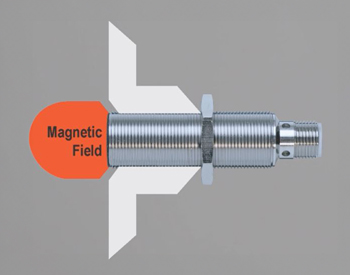The pros and cons of flush, non-flush and semi-flush mounting inductive sensors
Understanding the effects of mounting inductive proximity sensors in or on metal surfaces
Reading Time: minutes
Inductive proximity sensors have been around for decades and have proven to be a groundbreaking invention for the world of automation. This type of technology detects the presence or absence of ferrous objects using electromagnetic fields. Manufacturers typically select which inductive sensor to use in their application based on their form factor and switching distance.
Although, another important factor to consider is how the sensor will be mounted. Improper mounting conditions can cause the sensor to false trigger, decreasing its reliability and efficiency. Since inductive proximity sensors target metal objects, surrounding the sensor with a metal mounting will cause unintended consequences for the user. Understanding these implications will help you select the correct inductive sensor for you specific application. There are several mounting options available for this type of sensor, including flush mount, non-flush mount, and semi-flush mount. We will dive into each type in more detail below.
Flush mounting
Flush mounting, also known as embeddable mounting, is exactly what the name describes. The sensor is flush with the mounting surface. The advantage of mounting the sensor in this way is that it provides protection to the face of the sensor. The opportunities are endless for how sensors can be damaged but with the flush mounting style, these factors are reduced. The way a flush mounted sensor is designed causes the magnetic field to only generate out of the face of the sensor (see below). This allows the sensor to work properly by avoiding triggering from the mount as opposed to the target. The disadvantage of this is that it creates shorter switching distances than other mounting types.
 Non-flush mounting
Non-flush mounting
A non-flush inductive proximity sensor is relatively easy to spot because it extends out from the mounting bracket and also uses a cap that surrounds the sensor face. Non-flush sensors offer the longest sensing distance range because the electromagnetic field extends from the sides of the sensor face as opposed to the edges or strictly the front of the face.
There are some consequences to consider when selecting this style. The sensor head is exposed to the external environment. These sensors are more susceptible to being hit or damaged, which in turn, can cause failures within the process and cost the company money for replacements. It is important to understand these potential problem factors so they can be avoided in the design phase if you require the longer switching distance.
 Semi-flush mounting
Semi-flush mounting
The semi-flush, also known as quasi-flush, is similar to that of the flush mounting style but requires a metal-free zone around the sensor face to achieve the optimal sensing range. Thus, this sensor is protected and offers a larger sensing field than a flush mounted sensor. The disadvantage is that if metal is touching the edge of the sensor face, this will dramatically decrease the sensing range.
 Each style offers advantages and disadvantages. Each style uses a specific technology and design to allow it to adapt to different applications. Understanding these pros and cons will allow you to make a more informed decision for which to use in the application at hand.
Each style offers advantages and disadvantages. Each style uses a specific technology and design to allow it to adapt to different applications. Understanding these pros and cons will allow you to make a more informed decision for which to use in the application at hand.
Keywords
- Basics of automation
Author

Jake Jajack
1 Contributions
Comment
Popular posts
Industrial sensing fundamentals – NPN vs PNP
What is a capacitive sensor?
How do I wire my 3-wire sensors?
The basic operating principle of an inductive proximity sensor
Contact form
Do you have any questions or suggestions? We are at your disposal.
Balluff Inc.
-
8125 Holton Dr.
Florence, KY 41042
